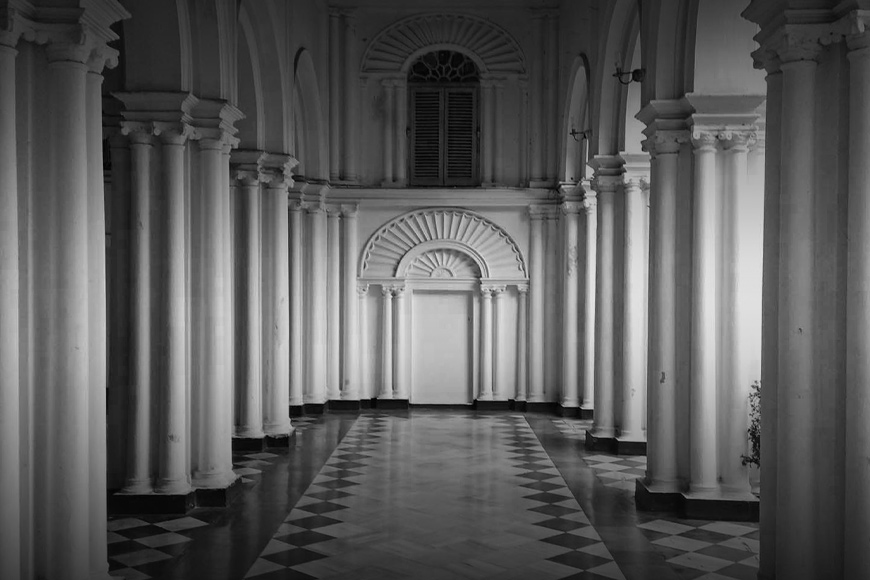Digambari Devi set an example of women empowerment – GetBengal story

Even if the colonial hangover fails to leave the bloodstream of an average Bengali babu, who dons hats and suits or plays golf in the Kolkata clubs even today, there was one woman in the 1800s who was so vehemently against her husband’s anglicised ways and his penchant of rubbing shoulders with the colonial rulers that she literally flagged off protests and alienated herself from her husband. And this was almost two centuries ago. Jorasanko Thakurbari had scripted a big chunk of Bengal’s Renaissance. When we talk exclusively about their women, we think of Gyanadanandini, Mrinalini and Notun Bouthan, but we often miss one woman, Digambari Devi, who scorned her husband’s Anglophilia. And who was her husband? He was none other than Prince Dwarakanath Tagore, the man who was more British in his ways than the British themselves, one who amassed huge wealth by trading with the Europeans, whose suits came from France, whose wine came from Scotland, and who threw lavish parties for the British and others at his Palatial Mansion in Belgachhia.
Digambari Devi was only 9 years old when she was married to Dwarkanath Tagore on February 7, 1811. Coming from the illustrious Pirali Brahmin family of Jessore, her father, Ramtanu Chowdhury, was a famous zamindar, educated, and pious. Digambari was known for her ethereal beauty, so much so that, legend has it, the idols of Jagadhhatri and Maa Durga were made by copying her facial structure in those days. But the fairytale ‘palace of dreams’ soon turned sour for Digambari, as she and her husband were poles apart in their religious views as well as practices.
In 1809, Prince Dwarkanath Tagore inherited the zamindari, and around this time, he and his wife Digambari were quite close. They both strictly followed the vegetarian Vaishnava cult and were always deeply involved in the prayers of the Lord. But things soon turned sour as Rabindranath Tagore’s grandfather started hobnobbing with the British and inviting them to his palatial home. In those days, women were no more than decorative pieces, thought to have no mind of their own and confined to the ‘andarmahal’ or inner quarters of the house. But Digambari Devi was different, and she staged her rebellion.
She was considered by her in-laws to be the Lakshmi of the house, or Grihalakshmi, not just for her beauty but because Thakurbari’s fortunes began to flourish the moment she stepped in. Her ‘peaches and cream’ complexion and long curly black hair, her little plump fingers, and her feet, like those of a clay goddess, were worshipped by all. She had a tremendous persona and strength of character, which earned her mother-in-law’s respect. She was also a conscientious follower of religious rites and rituals and possessed a fearless temperament. In an age where a woman had no identity without her husband, Digambari Devi had the courage to inquire of the Brahmin pandit and scholar of the shastras if it was appropriate to abandon a husband who had himself abandoned his family’s religion and all rites and rituals associated with that religion. By then, Raja Rammohan Ray had made Brahma religion, an offshoot of Hinduism, very popular, and from Vaishnava practices, Dwarakanath became attracted to the teachings of Brahma.
When Digambari was married to Dwarakanath, he practised Vaishnav Brahminism, performing the daily puja before the household deities of Lakshmi-Janardhan himself, while Digambari gave him the various things needed for the ritual. But the bond soon broke. Along with success in his business ventures with the Europeans, which fetched Dwarakanath a lot of money, came a life of luxurious indulgence. Dwarkanath’s personality changed; he started mingling freely with the British; he gave up performing the daily puja before Lakshmi-Janardhan. Instead, he hired a Brahmin to do so and started having meat and liquor. Dwarkanath and Digambari Devi’s lives were never to run on the same lines again. Digambari Devi protested, and quite surprisingly, the patriarchal society in those days, including her in-laws, supported her with genuine respect and admiration.
It was around 1823 that Dwarkanath built a garden house in Belgachia. Embellished with fountains, chandeliers, coloured tiles in the garden, statues imitating Western art, and expensive oil paintings, the house exuded charm and opulence. Dwarakanath started entertaining the Europeans in this house and spent a life of luxury with ‘other women', including the best of ‘baijis.’ At first, Digambari Devi, busy with the household and her religious tasks, did not notice this transformation in her husband. Her elder son, Debendranath, had been married by then, and her daughter-in-law, Sarada, was at home but she would often hear rumours about her husband.
The Belgachia Villa was described to be a house of debauchery. Getting over her initial disbelief, Digambari Devi decided to believe the rumours only after seeing things for herself. This was a decision unthinkable at an age when, almost two centuries ago, women were taken in palanquins to bathe in the Ganges. She created a historical revolution by taking Sarada and a few other female relatives with her and marching to Belgachia Villa to find out what happened there.
She was astonished to find her husband sharing a seat with sahibs and memsahibs and drinking. Unlike other women, she spent no time in self-pity but summoned the contemporary erudite pandits and inquired of them what her duty should be under the circumstances. Should she uphold her family’s religion and faith and abandon her husband? Or should she abandon her faith and embrace her husband, live his new life, and adopt his new ways? This led to a huge debate in those days, and finally the consensus was that although it was her duty to look after her husband and serve him, it was not compulsory for her to cohabit with him. From that day on, apart from looking after his physical well-being, Digambari Devi severed all ties with Dwarkanath.
Every morning, she would visit her husband and do a pranam on the floor beside his bed. If she required a conversation with him, she did so, but after the talk concluded, she would immediately purify herself by taking a dip in the Ganges. Though Dwarakanath did not give his wife her due respect when she was alive, after her death, there were many moments when Dwarkanath felt her acute absence, as she was known as the ‘grihalakshmi’. When one of his ships carrying valuable cargo from the CAR Tagore company was shipwrecked, he was heard lamenting that since gracious fortune or Lakshmi was now gone, misfortune had struck.
Together, they had one daughter and five sons (the ones who survived infancy are Debendranath, 1817–1905, Girindranath, 1820–54, Bhupendranath, 1826–39, and Nagendranath, 1829–58). Digambari died young, in January 1839, at the age of 37, two days after the death of her thirteen-year-old son Bhupendranth.
But despite her early demise, she led a powerful women's empowerment movement from Jorasanko Thakurbari almost two centuries ago!










